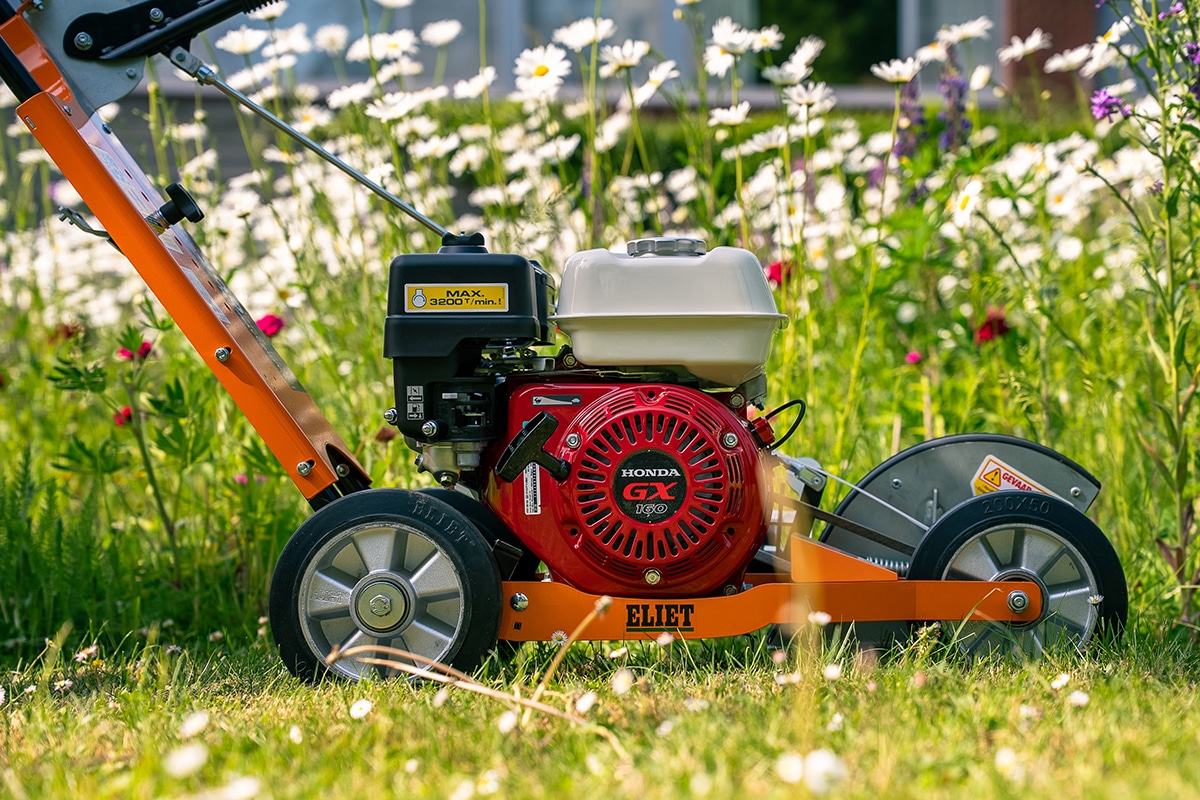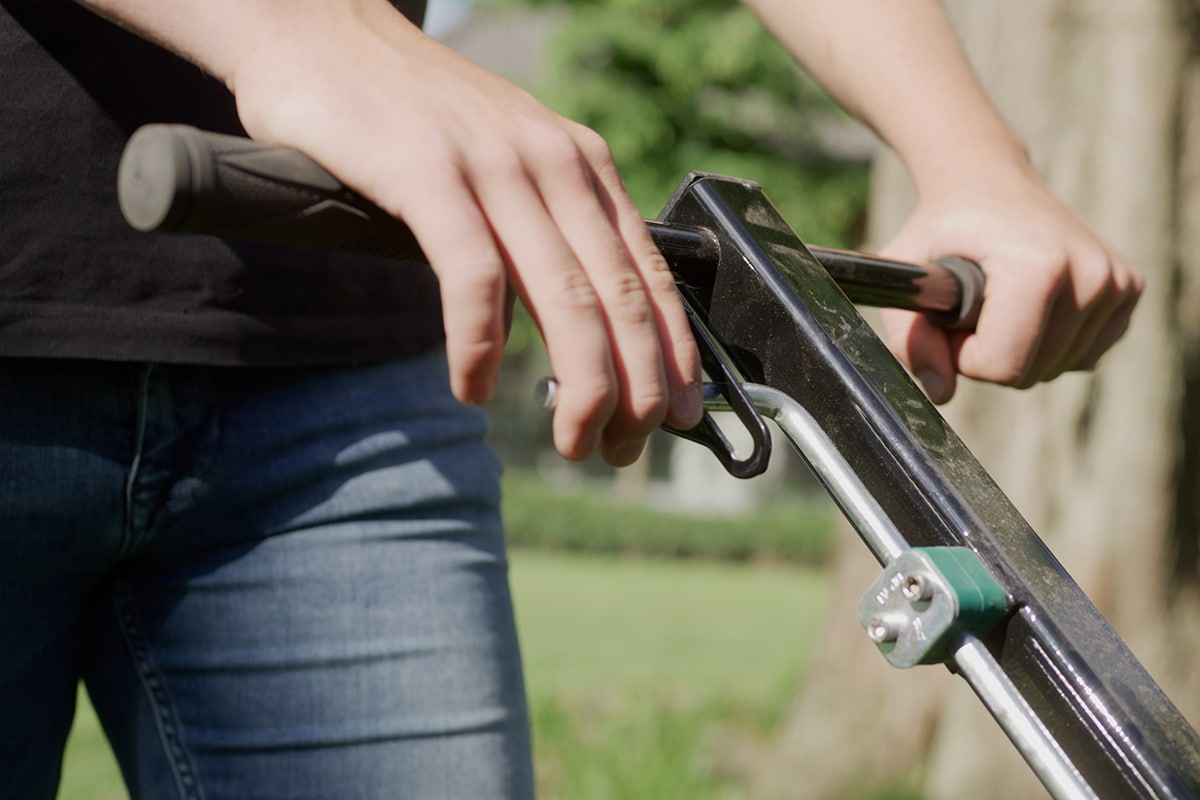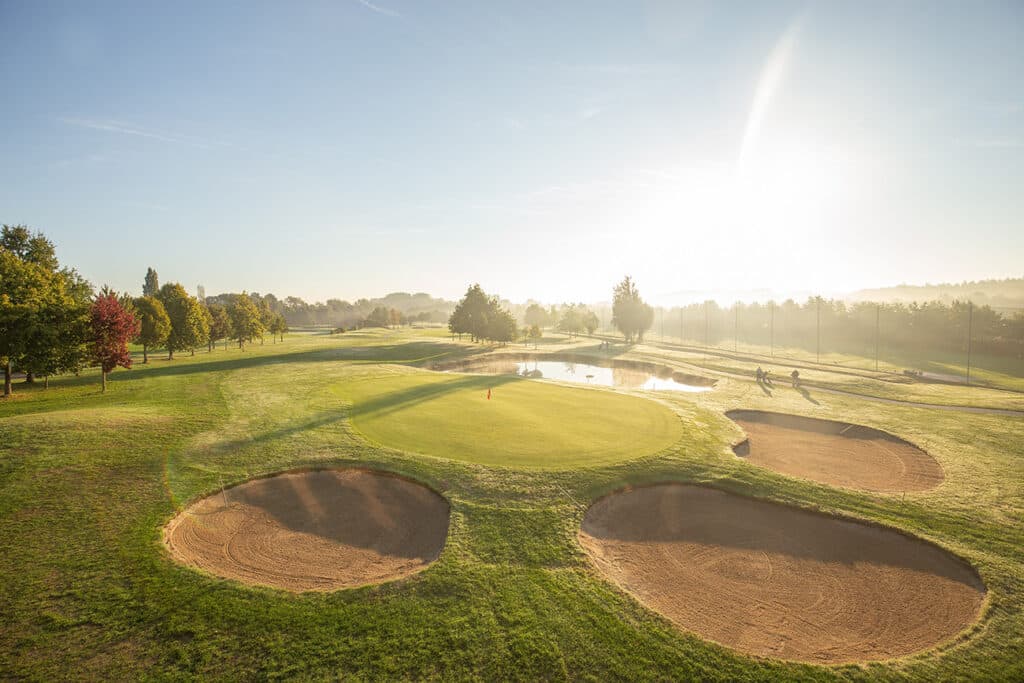
The battle for a peak golf or sports field
We expect sports and golf courses to look peaky at all times. To achieve such results, however, greenkeepers don't just fight scorching summers. Weeds, unwanted grasses and all manner of pests and diseases must also be controlled or, preferably, prevented. But how exactly do you do that, especially within the constraints of pesticide-free management? On Sept. 22, horticultural products trader Luc Pauwels organized a study day on the issue.
Aalsterse golf club De Kluizen was the scene of the study day. Bathing in the light of a pleasant autumn sun, guest speakers Ernst Bos (Praktijkcentrum Sport en Golf), Tim Baldwin (Bion Benelux BV), Stein De Meulemeester (Envu Benelux), Olaf Bos (Barenbrug) and Kim Swinnen (De Ceuster) gave an explanation and, in the latter case, even a demonstration of the measures that can be taken during construction, maintenance and repair to deal with some typical culprits.
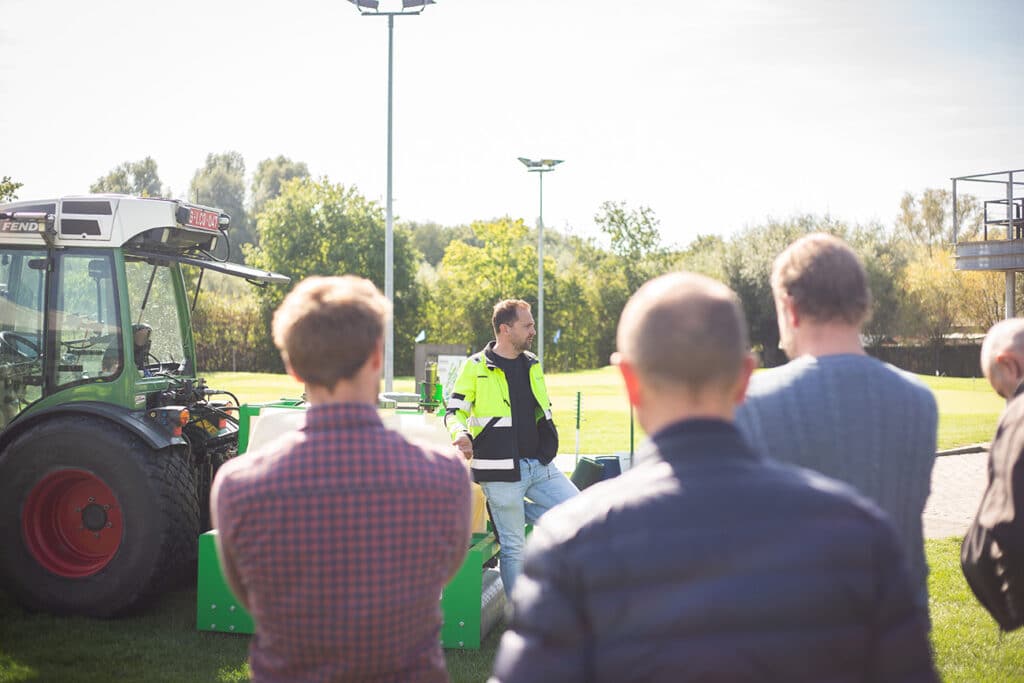
Think in target grasses
As in many other sectors, in the maintenance of sports and golf courses the clear motto applies: prevention is better than cure. Thus, under the name Integrated Pest Management, prevention has come to play an increasingly important role. And that starts unmistakably with the turf.
"Yet it's not enough to simply sow top quality," Ernst Bos throws in the cudgel right away. "You have to understand how a lawn works, and why pests, diseases and weeds arise. For example, a pest needs a place where it can lay eggs and a breeding ground for it; a disease, in addition to the pathogen, needs a susceptible host and the right environment. On all those things you can intervene to limit the opportunity."
Specifically for weeds, Bos emphasizes the importance of choosing the right grass. "With appropriate mowing management, you can indeed tackle certain weed species, but the main thing is to prevent germination and establishment. Two things play an important role in this: a closed turf on the one hand and growing conditions on the other. If you look at the characteristics of the main grass and weed species, you will see, for example, that ryegrass needs the same growing conditions as most weeds. Common ostrichgrass, on the other hand, does better in dry soil, in which weeds thrive less. In this way, you can look for a new balance. Think in target grasses, and tune your maintenance accordingly."
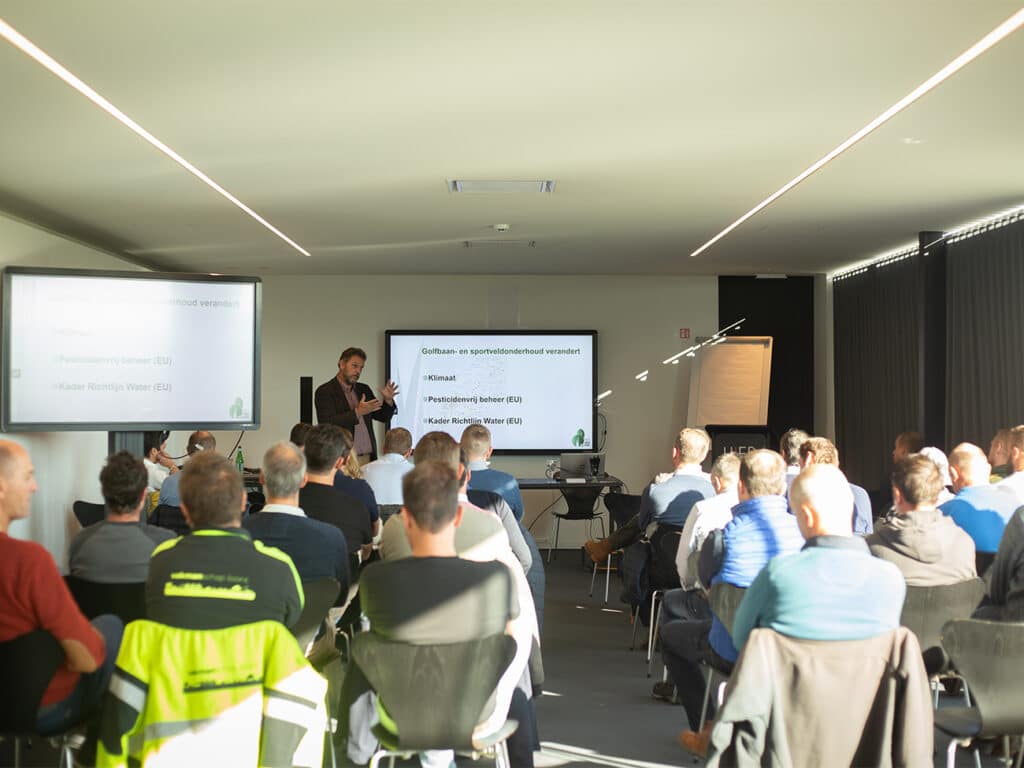
Unwanted street grass
Of course, not all grasses are equally desirable on a sports or golf course. Olaf Bos of grass breeding company Barenbrug thus sets his sights on street grass or Poa annua. "Street grass is a tough foe," he stresses. "It flowers up to eight times a year, produces seed in stress situations and germinates as early as 8°C. So you have to be able to beat street grass on all those factors."
Olaf Bos puts forward three solutions for this: "SOS® provides the necessary competition at low temperatures. This Super Over Seeding grass already germinates at 4°C and will therefore fill bare spots in the turf before street grass has a chance to grow. RPR®, on the other hand, is a self-healing ryegrass that also forms shoots under stress and repairs damage caused by treading before street grass can germinate in loose soil. Finally, Resilient Blue® is a mixture of field legume grasses with high genetic tolerance to heat, drought and other stress factors. This allows you to maintain a full turf even in difficult conditions, with no room for street grass."
Snow mold prevention and treatment
There are several reasons why street grass is undesirable on sports and golf courses. One such reason is the high susceptibility to snow mold or Fusarium nivale. "This disease affects as many as 80% of golf courses during the fall and winter months," Tim Baldwin knows. "If you want to prevent this, you actually have to deal with them as soon as the spores germinate. Although, of course, it's hard to see at that point."
Central strategies in preventing snow mold, according to Baldwin, include limiting shade and ensuring adequate air circulation, reducing thatch, maintaining a soil pH between 5.5 and 6.5, and applying dew dispersants to ensure that the foliage does not remain wet for long periods of time.
In addition, he also suggests an adapted nutritional regime for winter, in which iron, calcium and potassium play a central role. "We have already conducted several tests with this nutritional regime. These showed that 35 to 40% less snow mold occurred. Over the entire area of a golf or sports field, that has a significant impact. It means you have to treat less and in many cases the treatment will be more successful."
If treatment has to be done, Stein De Meulemeester suggests the very first biological fungicide for this purpose. "Harmonix® Turf Defense is a biological plant protection product based on a specific strain of Bacillus amyloliquefaciens, specifically QST 713, which works through contact action on the leaf. In the Netherlands, the agent is already recognized and approved as a fungicide on sports fields and golf courses; in Belgium, that recognition is expected during the course of next year."
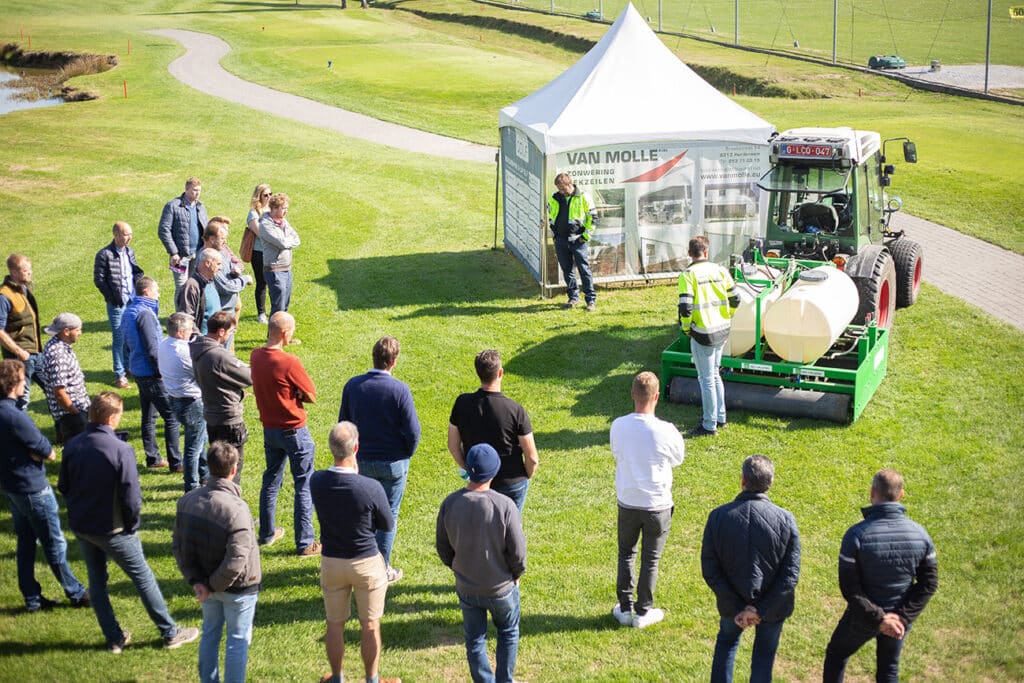
grubs and leatherjackets
Because in addition to weeds, undesirable grasses and diseases, pests sometimes get in the way of the immaculate condition of golf and sports grounds, Kim Swinnen demonstrated on the golf course how contracting company De Ceuster optimizes the application of nematodes.
"Nematodes are a well-known way to control grubs and leatherjackets in a biological way, but in practice there are some issues that hinder the success of the treatment. Just think about the exposure to UV light, the temperature, the limited mobility of the nematodes, and so on. To respond to this, we have developed a machine that first cuts open the turf, then sprays the nematodes over the surface and rinses with water, enriched or not with biostimulants. So everything is aimed at getting the nematodes as close as possible to the larvae, without damaging them during the treatment, in order to maximize the efficiency of the treatment."
